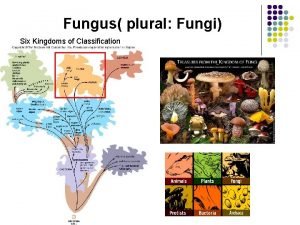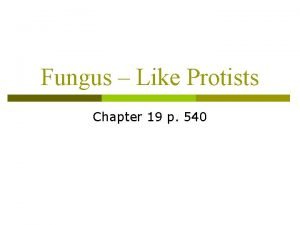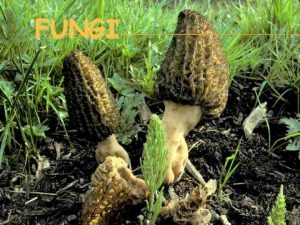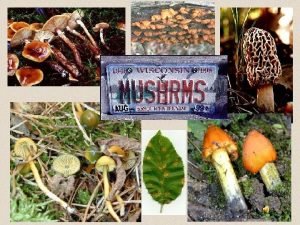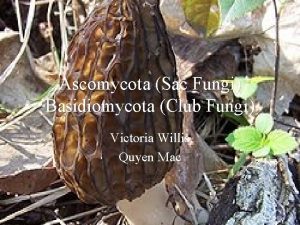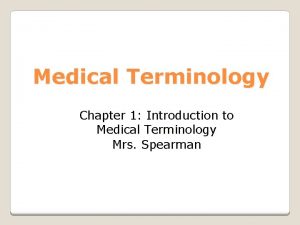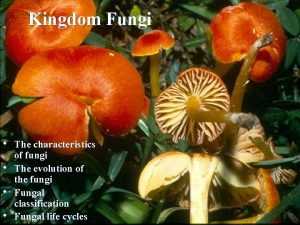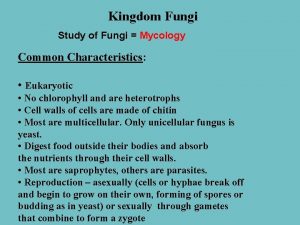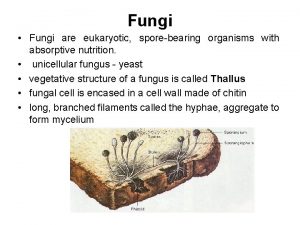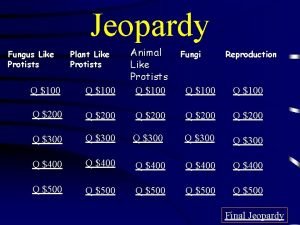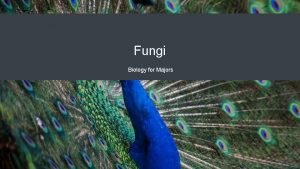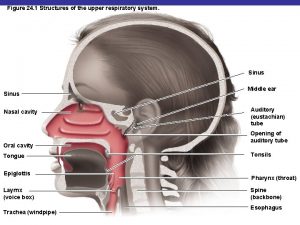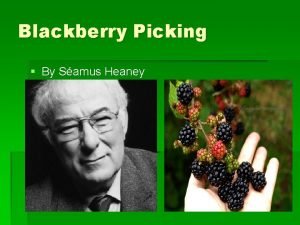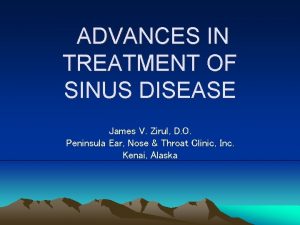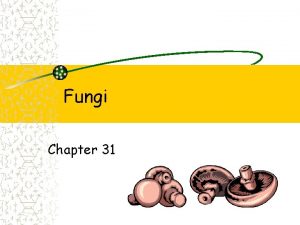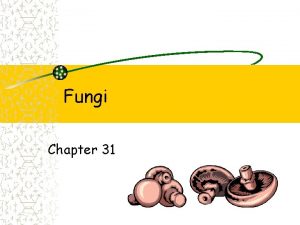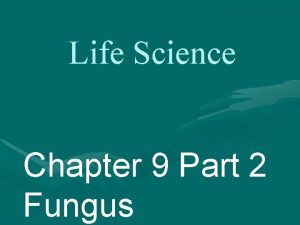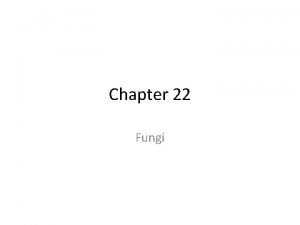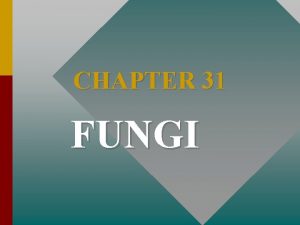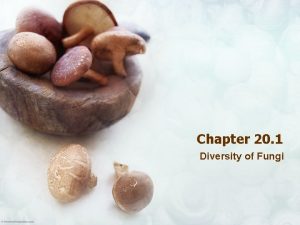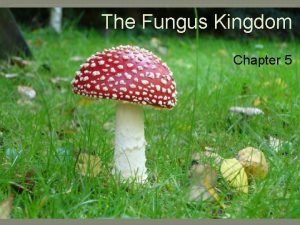Life Science Chapter 9 Part 2 Fungus Fungi















- Slides: 15

Life Science Chapter 9 Part 2 Fungus

• • • Fungi water molds, bread molds, Sac fungi, yeasts, mushrooms and Penicillium sp. Usually require moist, dark and warm habitats. Characteristics: – i. Eukaryotic heterotrophs decomposers – ii. Many are Saprophytes or parasites – iii. Most are Multicellular however yeast are unicellular – iv. Most are immobile – v. Cell Wall present and composed of Chitin (except Oomycota) – vi. Sexual and asexual reproduction present

Fungi Structure • Hyphae- main individual structure that makes up all multicellular fungi • Mycelium: Thick masses of hyphae – Individual branching threadlike tubes • Loosely tangled hyphae – fuzzy mold • Tightly packed hyphae– mushrooms Remember all fungi are heterotrophs – their hyphae grow into the food source, secrete digestive enzymes and breakdown ( dissolve) the tissue then absorb and use as an energy source.

Reproduction – Sexual & Asexual • Sexual: – Gametangia: the hyphae of two fungi meet and form swollen haploid tips that eventually fuse to form a gamete, the zygospore • Asexual: – Sporangia & Conidia produce spores. Spores: are tiny lightweight structures usually dispersed by the wind. – Budding – in yeast a mitotic “growth” comes off of the cell forming a new genetical identical organism Sporangia zygospore Buds

5 “Need-to-Know” Phyla • Phylum Oomycota – Protist like fungi –water molds • Phylum Zygomycota – Thread-like fungi, Common bread molds • Phylum Ascomycota – includes yeast and Sac Fungi: Dutch Elm Disease fungus • Phylum Basidiomycota – Club Fungi, the mushrooms • Phylum Deuteromycota – The Imperfect Fungi, Penicillium sp. , athlete’s Foot Fungus, Ringworm

5 “Need-to-Know” Phyla

Phylum Oomycota • Protist-like fungi • water molds, Potato fungus, fish fungus Potato fungus Spores w/ flagella

Phylum Zygomycota • Thread-like fungi • bread molds • Stolon, rhizoids, sporangiophore, sporagium, spores

Phylum Zygomycota

Phylum Ascomycota • Sac Fungi • Yeast, Dutch Elm Disease, truffles • Cell Wall, Vacuole, nucleus, bud truffle Dutch elm fungus

• • • Phylum Basidiomycota The Club Fungi – The toadstools, mushrooms & puff balls Stipe, Cap, Gills, Basidia, Rhizoids

Basidiomycota The name means “Pedestal Fumgus”

Phylum Deuteromycota • The Imperfect Fungi • Penicillium sp. , Athlete’s Foot, Ringworm

Lichens • Symbiotic relationship – both organisms benefit from the relationship • certain fungus have with a green algae. • algae carry out photosynthesis providing the fungus w/ nutrients. • fungus provide the algae w/ water and minerals and a substrate to grow.

I admit it …. I am no longer the “Fun Guy” But someone had to tell you about the Kingdom Fungi… Let’s go Home!!
 Fungus plural
Fungus plural Funguslike
Funguslike Club fungi are morels truffles bracket fungi yeast
Club fungi are morels truffles bracket fungi yeast Deuteromycetes
Deuteromycetes Club fungi life cycle
Club fungi life cycle What s your favorite subject
What s your favorite subject The word root athr means ________
The word root athr means ________ Characteristic of fungi kingdom
Characteristic of fungi kingdom Plazmogamie
Plazmogamie Chytridiomycota examples
Chytridiomycota examples Fungi are eukaryotic
Fungi are eukaryotic Fungus jeopardy answer key
Fungus jeopardy answer key Draw flow chart of aseptate division of fungi
Draw flow chart of aseptate division of fungi Mycoplasma pneumoniae
Mycoplasma pneumoniae Rat grey fungus
Rat grey fungus Ponaris fungus
Ponaris fungus
